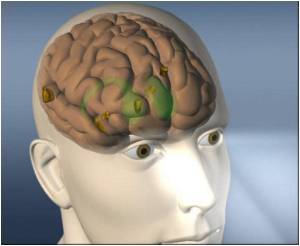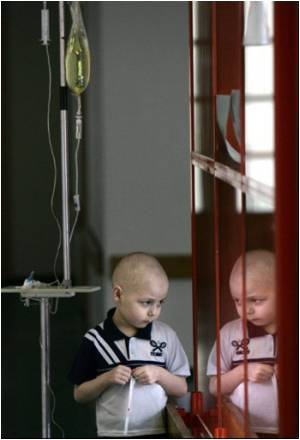Nearly two-thirds of patients with high-risk neuroblastoma cannot be cured using tumor-killing cancer drugs. Neuroblastoma is a common tumor that forms in the nerve cells of children.

"New treatment approaches are very much needed for children with high-risk childhood cancers; that is, those that are metastatic at diagnosis and likely to recur," says senior study author Kimberly Stegmaier of the Dana-Farber/Children's Hospital Cancer Center and the Broad Institute of the Massachusetts Institute of Technology and Harvard University. "By focusing on an alternative strategy to treating neuroblastoma tumors, we identified a compound class that in early testing in neuroblastoma cells in the laboratory shows promise for treating children with this disease."
Beyond the standard approach of using drugs that kill tumor cells, another promising strategy is to identify compounds that promote differentiation, which causes tumor cells to stop dividing and growing. But the benefits of differentiation therapy had not been fully explored.
To address this need, Stegmaier and her team developed a method to screen small molecules for their ability to trigger differentiation in neuroblastoma cells. First, they treated these cells with drugs known to induce differentiation and looked for accompanying changes in the activity levels of genes. They found that 59 genes showed changes related to differentiation. Using this genetic signature for differentiation, they then screened nearly 2,000 small molecules and identified one compound that strongly promoted differentiation in neuroblastoma cells, especially when combined with a drug already approved to treat this type of cancer.
The newly identified compound works by selectively inhibiting a subset of gene-regulating proteins called histone deacetylases (HDACs). "This work supports the need to develop selective HDAC inhibitors for clinical application and, more broadly, illuminates the power of integrating signature-based screening with new approaches to chemical synthesis to provide novel biological insights into human disease," Stegmaier says.
Source-Eurekalert










